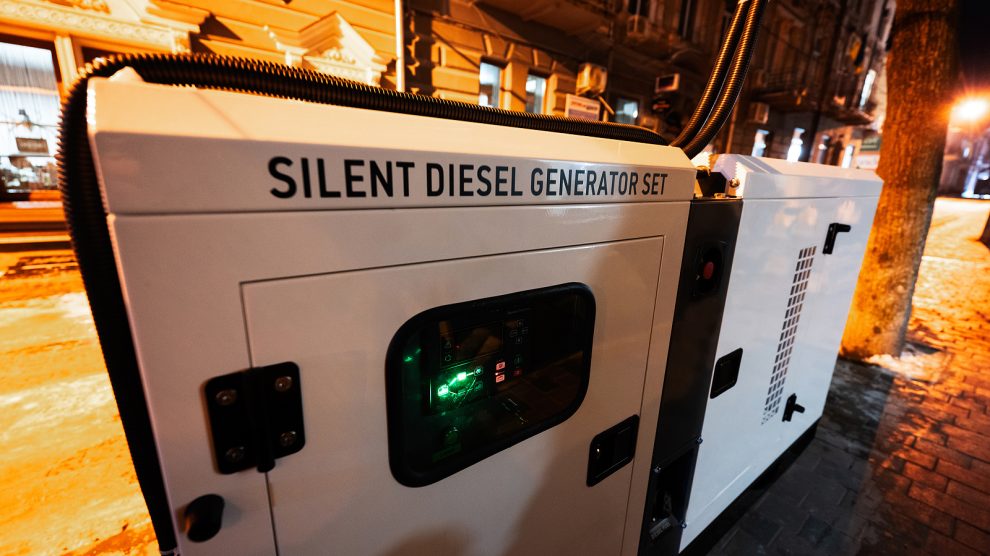Since the beginning of its invasion, Russia has hit 271 energy facilities in Ukraine causing colossal damage to the country’s energy system. It will be impossible to restore full capacity before the heating season starts.
According to Dmytro Sakharuk, the executive director of Ukraine’s largest commercial energy firm, DTEK, Ukrainians should prepare for a difficult winter. While the company continues to repair facilities damaged or destroyed by Russian bombing, it will not be possible to restore full capacity by winter.
“The conditions in which winter will start in Ukraine will be much worse than last year,” he says.
- Poland, Ukraine grapple with similar, but subtly different demographic troubles
- How generators became Ukraine’s hottest commodity
- Hot and cold: The risks posed by mines at Zaporizhzhia nuclear power plant
The director of the Centre for Energy Research, Oleksandr Kharchenko, says that the energy sector will be able to restore the high-voltage power grid to a maximum of 30-40 per cent of its normal state. He too suggests that Ukrainians should be ready for a difficult winter.
At the same time, energy market experts say it is most likely that Russia has gone into missile stockpiling mode in order to continue its massive attacks on Ukraine’s energy system in the autumn.
Since the beginning of the Russian invasion of Ukraine, enemy shelling has affected half of Ukraine’s entire energy system, says Energy Minister German Galushchenko.
According to Galushchenko, 271 hits on Ukrainian energy facilities have been verified so far. At the same time, he emphasizes that there are facilities that are completely destroyed and cannot be restored.
The minister adds that Ukraine is currently undergoing the most extensive repair campaign in its history, as it is necessary to restore the system as much as possible by the beginning of the heating season. He cites World Bank figures estimating the losses of the Ukrainian energy sector at 11 billion US dollars.
“However,” Galushchenko adds, “this amount is not final, as shelling continues and the total loss already exceeds this figure.”
An impossible job
At the same time, energy experts believe that Ukraine will not be able to repair all the damaged power facilities by the beginning of the heating season. Sakharuk says that DTEK is carrying out scheduled repairs and restoration of damaged thermal power plant units.
According to him, the current work has been ongoing for the last five months – seven blocks have been repaired, and the same number of blocks are in the process of being repaired. He notes that the company plans to clean up 27 thermal power plant units in 2023. It also needs to restore 1.4 GW of generating capacity.
Andriy Gerus, an MP and head of the parliamentary committee on energy and housing and communal services says that the biggest problem now is the lack of safety margin in the networks of Ukrenergo, the sole operator of the country’s high-voltage transmission lines, namely at the company’s substations. According to Gerus, Ukraine is dependent on large generating facilities that deliver electricity through large substations. Accordingly, the safety margin at those substations is critical, and there is none.
At the same time, as Serhiy Makogon, former general director of the Ukrainian Gas Transmission System Operator stresses, the past winter showed that the main vulnerability of the Ukrainian energy system is its centralised nature.
Damage to any of the country’s key facilities (12 thermal power plants and a similar number of large substations) leads to significant blackouts throughout the country. The task now is not only to restore these facilities and protect them, but also to actively develop decentralised energy, he says.

Come winter, Russia will intensify strikes on energy facilities
Energy Minister Galushchenko says that Ukraine expects the continuation of enemy attacks on energy facilities during the next winter, so the need for energy equipment, especially high-voltage equipment, as well as systems that can ensure decentralisation of generation, in particular gas turbines, remain relevant.
According to military expert Roman Svitan, Russia has recently launched drone strikes against Ukraine. This may mean that it has entered the mode of accumulating missiles in order to launch large-scale strikes on energy facilities starting from the autumn, and the country should be prepared for this, Svitan says.
Military expert Alexander Kovalenko does not rule out such a scenario. According to him, since June 24 the Russian Federation has not been using aircraft-based missiles for strikes on the territory of Ukraine.
Since then, it has been using mostly sea-based Kalibr cruise missiles. He sees nothing good in this “lull”, as production in Russia continues. He notes that Russia produces about 35 Kh-101, Kh-555 missiles per month, which he says Russia is accumulating for use in the autumn.
The head of the Committee of Economists of Ukraine, Andriy Novak, says that Ukraine accordingly needs even more air defence systems and other means of repelling missile and drone attacks around key energy facilities – nuclear power plants, hydroelectric power plants, large thermal power plants – to minimise the probability of their being hit.
In addition, he says that it will be necessary to provide Ukraine with modern combat airplanes such as the F-16 and F-18. These, Novak says, are capable of destroying almost 100 per cent of flying objects of any complexity and any trajectory.
All experts agree that Ukrainians should be preparing themselves for the heating season and winter – checking generators, stocking up on fuel, and buying powerbanks.
Unlike many news and information platforms, Emerging Europe is free to read, and always will be. There is no paywall here. We are independent, not affiliated with nor representing any political party or business organisation. We want the very best for emerging Europe, nothing more, nothing less. Your support will help us continue to spread the word about this amazing region.
You can contribute here. Thank you.







Add Comment